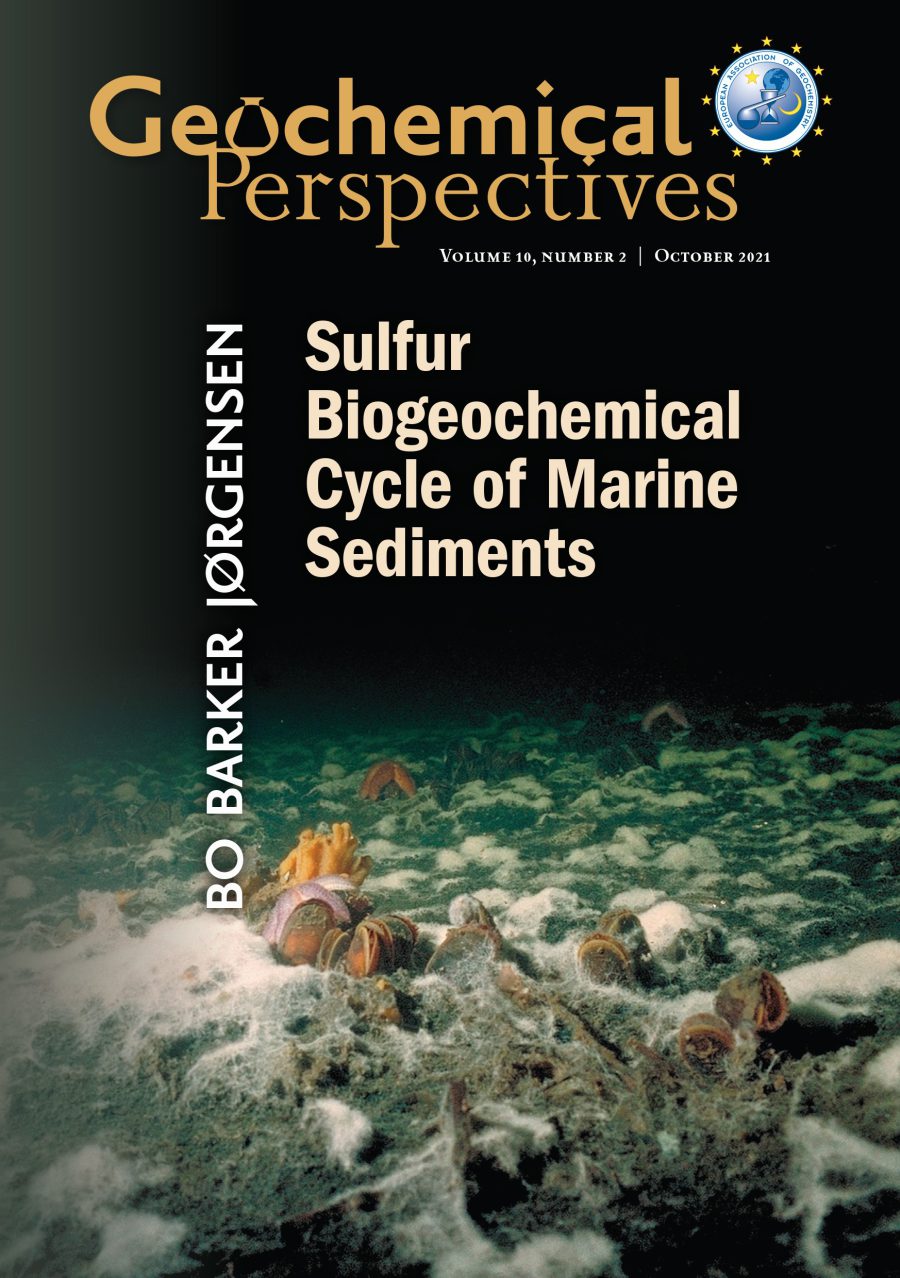
Sulfur Biogeochemical Cycle of Marine Sediments
by Bo Barker Jørgensen1doi: 10.7185/geochempersp.10.2 | Volume 10, Number 2 (pages 145-307)
Abstract
Complex interactions between microbial communities and geochemical processes drive the major element cycles and control the function of marine sediments as a dynamic reservoir of organic matter. Sulfate reduction is globally the dominant pathway of anaerobic mineralisation and is the main source of sulfide. The effective re-oxidation of this sulfide at the direct or indirect expense of oxygen is a prerequisite for aerobic life on our planet. Although largely hidden beneath the oxic sediment surface, the sulfur cycle is therefore critical for Earth’s redox state.
This Geochemical Perspectives begins with a brief primer on the sulfur cycle of marine sediments and a description of my own scientific journey through nearly fifty years of studies of sulfur geochemistry and microbiology. Among the main objectives of these studies were to quantify the main processes of the sulfur cycle and to identify the microbial communities behind them. Radiotracers in combination with chemical analyses have thereby been used extensively for laboratory experiments, supported by diverse molecular microbiological methods. The following sections discuss the main processes of sulfate reduction, sulfide oxidation and disproportionation of the inorganic sulfur intermediates, especially of elemental sulfur and thiosulfate. The experimental approaches used enable the analysis of how environmental factors such as substrate concentration or temperature affect process rates and how concurrent processes of sulfate reduction and sulfide oxidation drive a cryptic sulfur cycle. The chemical energy of sulfide is used by chemolithotrophic bacteria, including fascinating communities of big sulfur bacteria and cable bacteria, and supports their dark CO2 fixation, which produces new microbial biomass.
During the burial and aging of marine sediments, the predominant mineralisation processes change through a cascade of redox reactions, and the rate of organic matter degradation drops continuously over many orders of magnitude. The main pathways of anaerobic mineralisation and the age control of the organic matter turnover are discussed. In the deep methanic zone, only a few percent of the entire degradation process remains, which provides a small boost of substrate for sulfate reduction through the process of anaerobic methane oxidation. The stable isotopes of sulfur provide an additional tool to understand these diagenetic processes, whereby the combination of microbial isotope fractionation and open system diagenesis generate a differential diffusion flux of the isotopes.
In relation to the organic carbon cycle of the seabed and the contribution of methane, the paper discusses the global sulfur budget and the role of sulfate reduction for organic matter mineralisation in different depth regions of the ocean – from coast to deep sea. The published estimates of these parameters are evaluated and compared. Finally, the paper looks at future perspectives with respect to gaps in our current understanding and the need for further studies.

